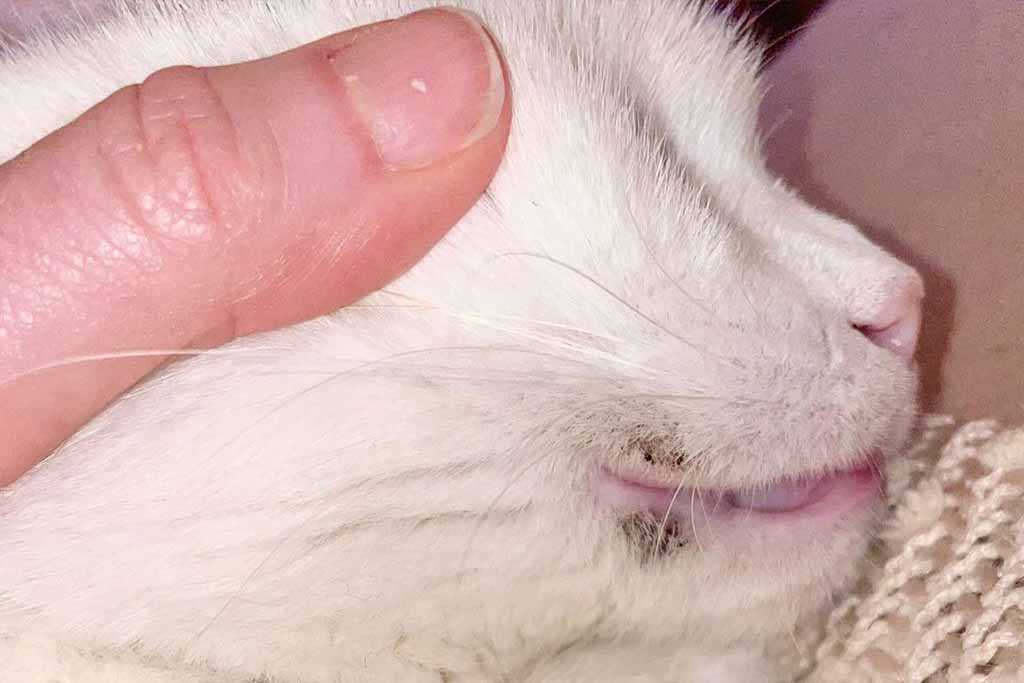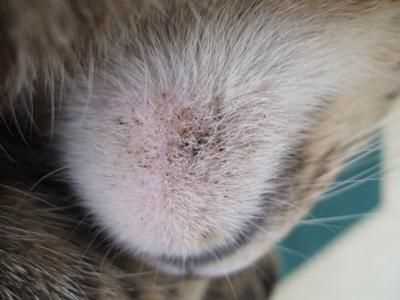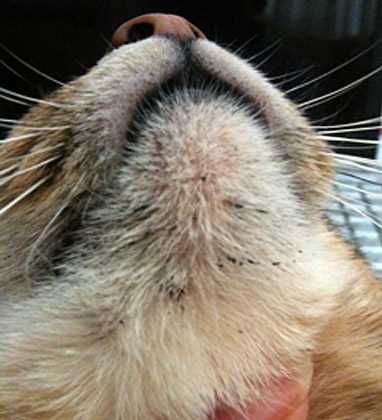Using a shallow, stainless steel bowl for meals can significantly reduce irritation on my face. This simple switch minimizes the risk of bacteria buildup, which often contributes to unsightly spots. Regular cleaning of my feeding area also plays a crucial role in prevention. Keeping my dining space tidy ensures that leftover food and moisture don’t linger, leading to healthier skin.
Incorporating a gentle, vet-approved cleanser into my routine has proven beneficial. A mild soap designed for sensitive feline skin helps keep my face clean without causing further irritation. It’s essential to use lukewarm water when washing; too hot or cold can be uncomfortable. After cleansing, a soft cloth works wonders to pat dry my face, avoiding any harsh scrubbing.
Monitoring my diet is another key aspect. A balanced nutrition plan rich in omega fatty acids promotes healthy skin. Discussing dietary options with my human allows for adjustments that can improve my overall well-being. Regular vet check-ups help ensure that my skin condition is not a symptom of a more significant health issue.
Identify the Symptoms of Feline Facial Folliculitis

First, look for small, raised bumps on the lower jaw or around the mouth area. These can appear red or inflamed, signaling irritation. Pay attention to any blackheads or dark spots, which are often a sign of clogged pores.
Check for signs of discomfort, such as excessive scratching or rubbing of the face against objects. This behavior can indicate that something is bothering me. If you notice me avoiding food or showing reluctance to eat, it may be due to pain or discomfort in that area.
Watch for swelling or crusty patches forming on the skin. If these patches begin to ooze or bleed, this is a clear indication that the situation is worsening and requires immediate attention. A foul odor emanating from the chin area is another concerning symptom that should not be overlooked.
Keep an eye on my grooming habits. If I suddenly stop cleaning my face or if there’s a noticeable change in my fur texture, it could suggest an underlying issue related to this condition.
Choose the Right Cleaning Products for Your Furry Friend

Opt for gentle, hypoallergenic cleansers specifically formulated for sensitive skin. Avoid harsh chemicals that can irritate the delicate area beneath the whiskers.
- Look for products with natural ingredients like aloe vera or chamomile, which soothe irritation.
- Cleansing wipes designed for pets can be a convenient choice, ensuring quick and easy maintenance.
- Select a pH-balanced solution to maintain the skin’s natural barrier.
- Check for veterinary recommendations to ensure safety and efficacy.
Always perform a patch test with any new product. Apply a small amount on a less sensitive part of the body and monitor for any adverse reactions.
Consider products that are free from artificial fragrances, as these can cause additional irritation. A gentle, fragrance-free option will help keep the skin calm.
Regularly clean food and water dishes with safe, pet-friendly detergents to reduce the chance of buildup that can exacerbate skin issues.
If any irritation occurs after using a product, discontinue use immediately and consult with a veterinarian for alternatives better suited to your needs.
Implement a Regular Cleaning Routine
Maintaining a consistent cleaning schedule has significantly improved my comfort and skin condition. I recommend establishing a dedicated time each week for grooming sessions. Regularly brushing my fur helps to remove debris and dead skin cells that can contribute to skin irritation.
Utilize a soft, damp cloth to gently clean the area beneath my chin. This should be done at least twice a week to prevent the buildup of oils and dirt. Ensure that the cloth is clean and free from any harsh chemicals. After wiping, allow the area to dry naturally to avoid moisture retention.
It’s beneficial to monitor my eating habits as well. If I’m using plastic bowls, switch to stainless steel or ceramic, as these materials are less likely to harbor bacteria. Incorporate a washing routine for my food and water bowls, ensuring they are cleaned daily.
Look for a best ethical washing machine if you need a more effective way to wash my bedding and toys. Keeping my environment clean is just as important as caring for my personal hygiene.
By sticking to this routine, you can help minimize flare-ups and ensure my coat stays shiny and healthy. Make it a pleasant experience by giving me treats or extra cuddles during grooming sessions!
Consider Dietary Adjustments for Your Cat
Switching to high-quality, grain-free food made a difference for me. I noticed fewer breakouts since my human eliminated fillers and artificial additives from my meals. Look for options rich in proteins and omega fatty acids to promote healthy skin and coat. Ingredients like salmon or chicken as the first component can work wonders.
Introducing probiotics can also help balance the digestive system. They support overall gut health, which plays a role in skin conditions. My human adds a sprinkle of probiotic powder to my meals, and I feel great!
Avoiding dairy products is another smart move. Many of us struggle to digest lactose, leading to skin issues. Switching to lactose-free alternatives or sticking to my regular diet has helped keep my complexion clear.
Hydration is key too! Fresh water should always be available. Sometimes, I enjoy wet food, which not only keeps me hydrated but also contributes to my nutrient intake. It’s a tasty way to stay healthy.
Monitoring for food allergies is crucial. If a particular ingredient triggers reactions, it’s best to eliminate it from my diet. My human keeps a close eye on what I eat and how it affects my skin. If things get worse, we consult with a vet for tailored advice.
Consult a Veterinarian for Persistent Cases
If the discomfort on my face doesn’t improve with home care, seeking the advice of a veterinarian becomes necessary. They can identify underlying issues that may be contributing to the problem. Conditions like allergies, skin infections, or hormonal imbalances require professional intervention.
Signs That Require Professional Attention
Look for signs such as swelling, redness, or the presence of pus. If my symptoms persist despite regular cleaning, a visit to the vet is essential. They might suggest specialized treatments or medications tailored to my needs.
Potential Treatments from Your Vet
Veterinarians may recommend topical treatments or oral medications to tackle stubborn cases. In some instances, they could also suggest dietary changes to support skin health. If you’re also dealing with other issues like fungal infections, you might want to check out ringworm treatment for cats. Their expertise will guide you toward the best path for recovery.
Monitor Your Feline’s Skin Health Over Time
Keeping a close eye on my skin condition is key. I take note of any changes in texture, color, or the presence of bumps and irritations. Regular checks help catch potential issues early.
Daily Observations

During my grooming sessions, I examine my skin for any signs of irritation or discomfort. I pay attention to the areas around my mouth and chin, as these spots can be prone to problems. A quick daily check can reveal if something is off.
Document Changes

Maintaining a log of observations helps track patterns. I jot down any notable changes in my skin condition, including the frequency of flare-ups or reactions to cleaning products. This information can be crucial for identifying what works best for my skin health.
It’s also wise to share these notes with my human. They can help monitor my overall well-being and consult with a vet if needed. Staying vigilant ensures I remain comfortable and healthy.






